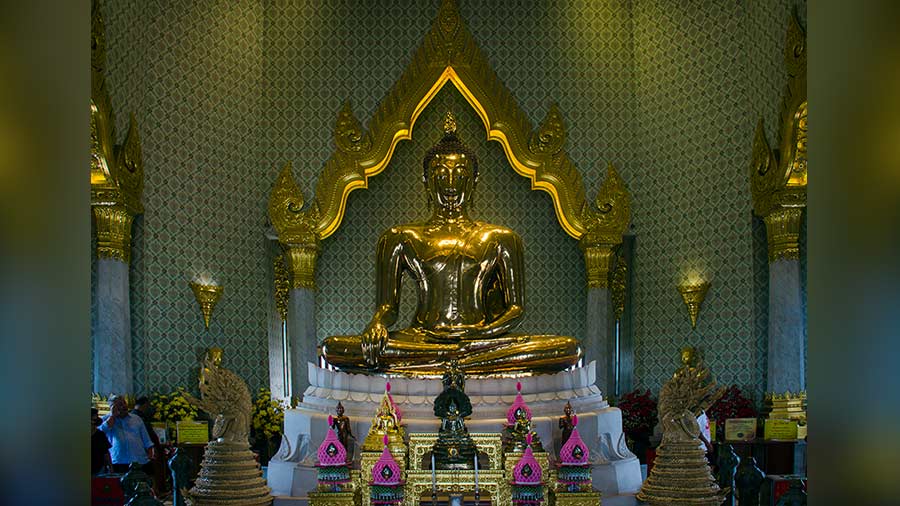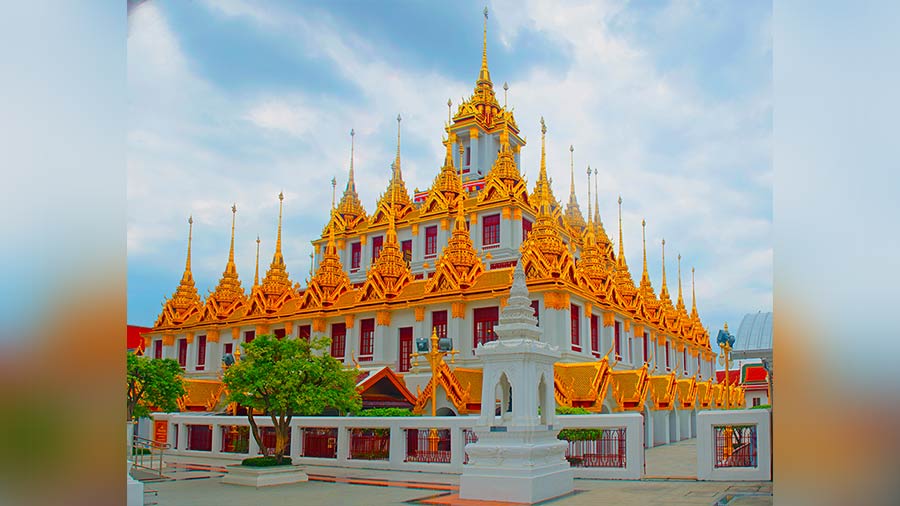It is not the golden Buddha but the real gold Buddha. Thailand has many temples housing giant golden statues of Buddha but Wat Traimit houses a giant statue of Buddha made of pure gold. Although the statue is several centuries old, its identity was only revealed only 67 years ago. In 1955, an ancient statue of Buddha was being enshrined in Wat Traimit. While lifting the statue one of the ropes broke sending the statues crushing to the floor. As a result of the crash the small portion of the plaster encasing the statue peeled off revealing a solid gold statue.
Timeline of gold Buddha:
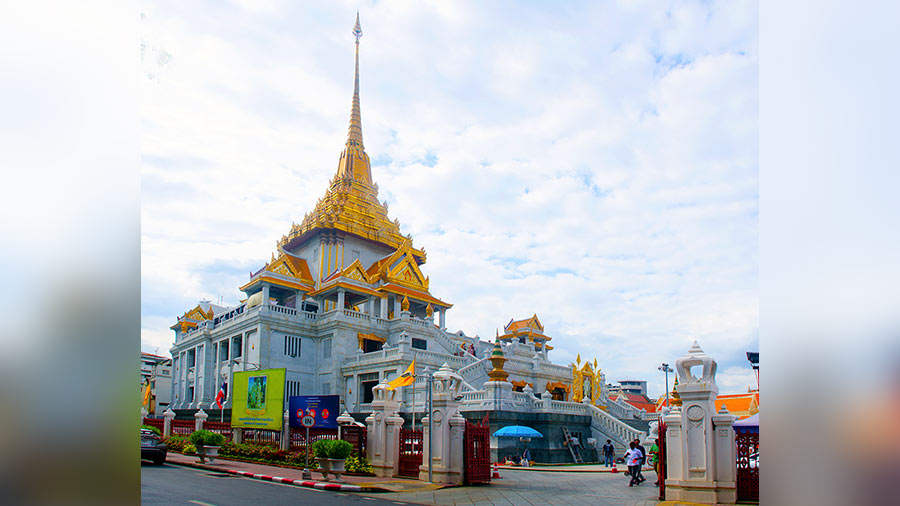
Wat Traimit in Bangkok
- Early unrecorded period: According to the artistic features and style of the statue, experts believe that it dates back to the Sukhothai period around 13th century CE. Later with the fall of the Sukhothai empire and the emergence of the Ayutthaya empire, the statue was shifted to Ayutthaya. The plastering was probably done to conceal the statue’s identity from the invading Burmese before the fall of the kingdom in 1767.
- Transfer to Wat Phraya Krai: With the Rattanakosin kingdom coming into power, Bangkok started developing as the capital city. Several statues from the northern part of Thailand (then Siam) were transported to the new capital and housed in new and renovated old temples. It was probably during the reign of Rama III (reign:1824 – 51), the third ruler of Rattanakosin dynasty, that the plaster covered gold Buddha statue was transferred to Bangkok and was enshrined in the Wat Phraya Krai.
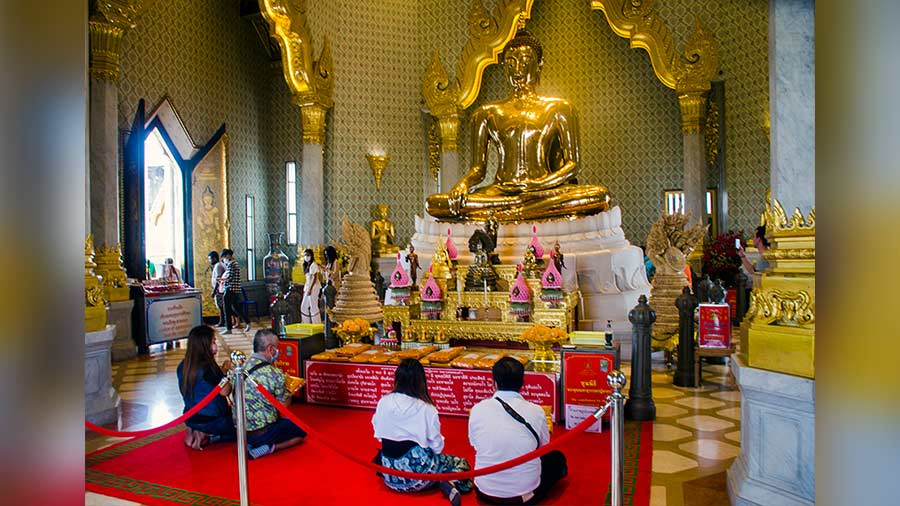
Visitors at Wat Traimit
- Transfer to Wat Traimit: In the early part of the 20th century, Wat Phraya Krai was abandoned. The Danish East Asiatic Company took over the area and constructed a warehouse and a timber mill. In 1935, the plaster-covered statue was transferred to Wat Traimit and initially kept in a temporary shed. Today, the warehouses of Asiatic have been converted into a shopping mall housing an open air museum. Two plaques narrate the story of the Gold Buddha.
- Revealing of the gold Buddha: Wat Traimit dates back to 1831. In 1954, the temple was extended to house the plastered covered gold Buddha statue. On May 25, 1955, a portion of the plaster peeled off during the accident revealing the actual gold statue. On December 18, experts confirmed that it was indeed gold. On February 23, 1956, the gold statue was finally enshrined at the top floor of Wat Traimit.
- Official recognition: In 2011, it was declared as the “sacred object with the highest intrinsic value” by The Guinness Book of World Records.

Display at the Chinatown Museum in Wat Traimit
Today, Wat Traimit, located at the edge of Bangkok’s Chinatown, is one of the most visited temples of Bangkok. Today, the golden (not gold) spire of the temple still dominates the skyscraper-infested skyline of Bangkok. Apart from the gold statue (housed on the top floor), the temple houses a Chinatown museum known as Yaowarat Chinatown Heritage Center or Wat Traimit Museum (second floor) and a Gold Buddha statue exhibition (third floor).
The Chinatown museum narrates the history of Bangkok’s Chinatown through various models and write-ups. It displays the evolution of Chinese trade and settlement right up to the present day. The Gold Buddha exhibition narrates the history of the statue. Several models with detailed write-ups explain the process of the casting of the giant statue.

Models depict a Chinese grocery shop at the Chinatown Museum, Wat Traimit
The top floor houses the star attraction of the temple, the giant gold Buddha statue. The seated Buddha is in Subduing Mara Mudra (Bhumisparsha) posture and towers to a height of 3m (9.8 ft) and weighs a staggering 5.5 tonnes.
Travel information
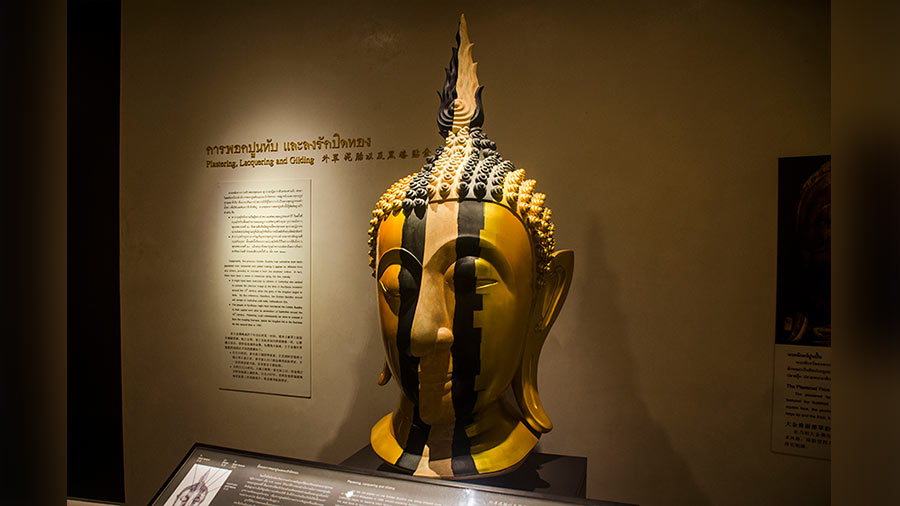
Models and write-ups narrate the process of making the gold Buddha statue
- Entry fee is 40 Baht for the Gold Buddha and 100 Baht for both museums
- The temple is open on all days but the museums are closed on Mondays. Timings for both: 8 am-5 pm
- Photography is allowed
